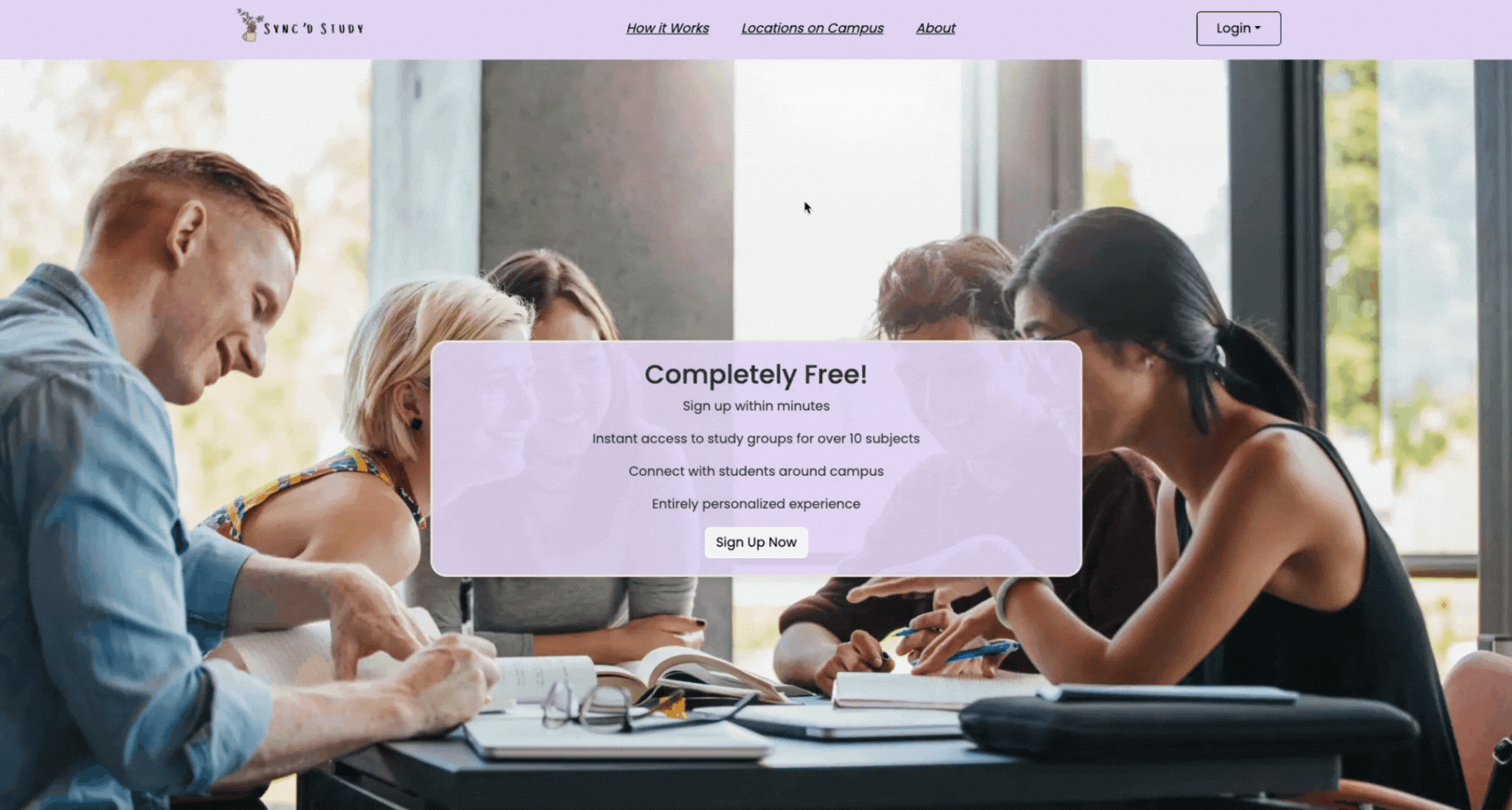Sync'd Study

Overview
Before diving into Sync’d Study, I had limited experience with comprehensive testing and deployment workflows. This project changed that completely. As part of a four-person team, I took on the crucial responsibility of ensuring our application was properly deployed and thoroughly tested—foundational elements that would support everything else we built.
Our application helps UH Mānoa students find and join peer-led study sessions, creating a more connected learning community on campus. While my teammates focused on the user interface and core features, I worked behind the scenes to build the infrastructure that would keep everything running smoothly.
My Role & Contributions
I spearheaded the initial deployment setup, configuring our Vercel environment and setting up pgAdmin for database management. While these might sound like simple tasks, they laid the crucial groundwork for everything our team would build. Between classes and other commitments, I made time to meticulously track my efforts using my phone timer, a small but important practice that helped our team maintain accurate project metrics and improve our estimation skills for future tasks.
One of my proudest achievements was developing the testing infrastructure. I crafted comprehensive Playwright tests that acted as a safety net for our application, catching potential issues before they could affect users. Even during busy weeks, I’d find pockets of time, sometimes late at night or between classes, to ensure our testing coverage remained strong. It wasn’t always glamorous work, but it was essential for maintaining the quality and reliability of our application.
Learning Journey
This project taught me lessons that went far beyond technical skills. I discovered that successful software development isn’t just about writing code it’s about attention to detail, consistent effort, and supporting your team in ways that might not always be visible in the final product. Through careful time tracking, I learned the art of effort estimation, often surprising myself with how tasks I thought would take hours sometimes wrapped up in minutes, while seemingly simple tasks required more depth than expected.
I also gained a deep appreciation for the “invisible” work in software development—the testing, the deployment configurations, the careful documentation that keeps everything running smoothly. While these aspects might not be as immediately noticeable as a sleek user interface, they’re absolutely crucial to building reliable software. Most importantly, I learned how to balance these responsibilities with my academic workload, finding creative ways to stay productive and contribute meaningfully to the team, even during the busiest weeks of the semester.
This experience showed me that being a good developer isn’t just about technical skills it’s about reliability, attention to detail, and being the kind of team member others can count on, even for the less exciting but essential tasks that keep a project running smoothly.
Sync’d Study links: